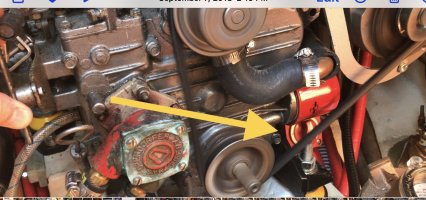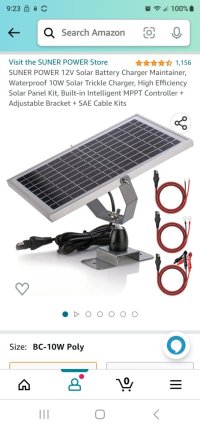Thanks for the info! I guess I better have an electrician take a look at thingsNo experience with the Harbor Freight solar stuff, but it wouldn't be my first choice. Just found:
HFT Thunderbolt 100W solar panel: $99.99
HFT Thunderbolt 30A charge controller $76.99
VS
Renogy 100W Solar panel: $84.99
Renogy Rover 30A MPPT controller: $120.99
Renogy is quality stuff. I used Renogy panels and Victron controllers, but I see Victron's prices have gone up a lot since I bought mine.
View attachment 46100
View attachment 46099
HI Jerry,As mentioned previously, Slick470's diagram is what you want to do, except you have a solar charger rather than an AC charger (plugs into the solar panel rather than the wall plug).
I assume you bought the...
The solar panel has an output plug that plugs directly into the charge regulator "solar" plug pigtail. That should be easy unless you need to extend the wire - if you do, make SURE you don't inadvertently reverse the polarity (don't cross the streams).
You will need to source a compatible plug for the battery and run a pair of wires from the solar charger plug to your batteries, putting a fuse (10A should be good) close to the batteries. In Slick470's diagram, this would be the alligator clips (you can use alligator clips if you want a temporary connection - still fuse it!). Make sure the + (red) side of the battery output plug goes to the + post on the battery!
Safely terminate the "Load" outputs so they don't short to each other or to anything else (heat shrink is good). Alternatively, you could connect the "load" output to e.g. a lighter plug. It isn't obvious whether the "load" output is powered by the battery when the solar isn't charging (probably). If it is powered by the battery, make sure you don't connect a load that could discharge the battery if it doesn't get enough sun.
This isn't a fancy multistage charge controller but it should keep your batteries topped off without boiling them.
Thanks so much for the step by step, and yes; those are the. parts I bought!! I know I am being cheap, but I may have to sell the boat


